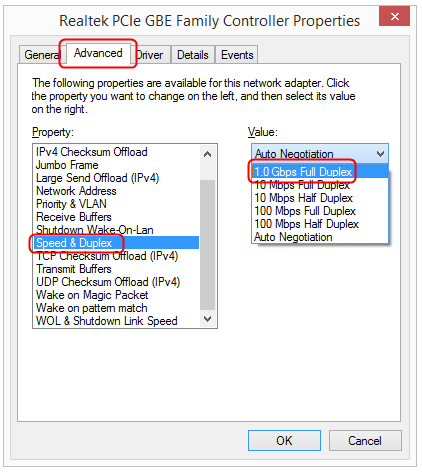Checking Hardware Compatibility for Higher Internet Speeds
Estimated Reading Time: 3 MinutesAre you on a high-speed or Gigabit plan but not getting the speeds you expected? Here’s how to check if your devices and equipment support higher speeds — whether you’re using a wired or Wi-Fi connection.
A. Wired (LAN) Connection
A wired connection provides the most accurate speed test results, as it connects directly to the modem or router.
Check the Computer’s Network Speed
For Windows:
1. Open Control Panel > Network and Internet > Network and Sharing Centre.
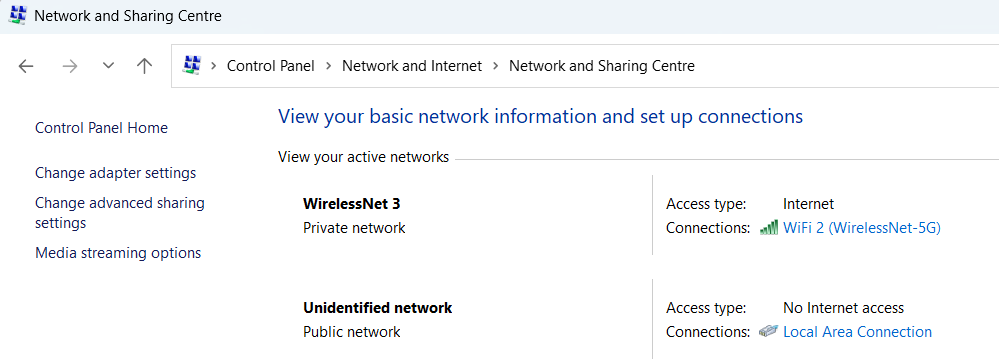
2. Click the hyperlink next to “Connections”.
3. Review the Speed — it should show 1.0 Gbps.
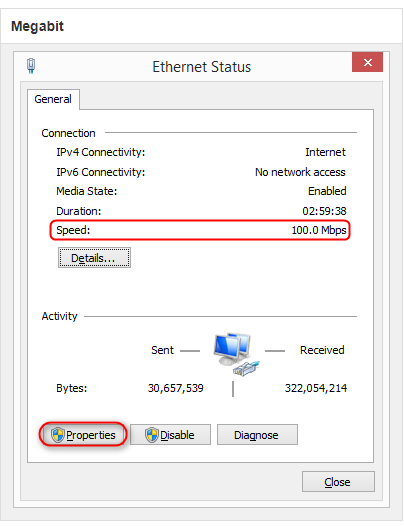
If it’s lower, as shown in the sample above, click Properties > Configure > Advanced > Speed & Duplex.
Set it to 1.0 Gbps Full Duplex or Auto Negotiation. If “1.0 Gbps” isn’t listed, your computer’s network card doesn’t support gigabit speeds.
For Mac:
1. Open System Preferences
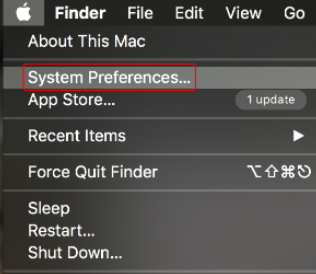
2. Select Network

3. Select the relevant Connected Ethernet adapter and click Advanced
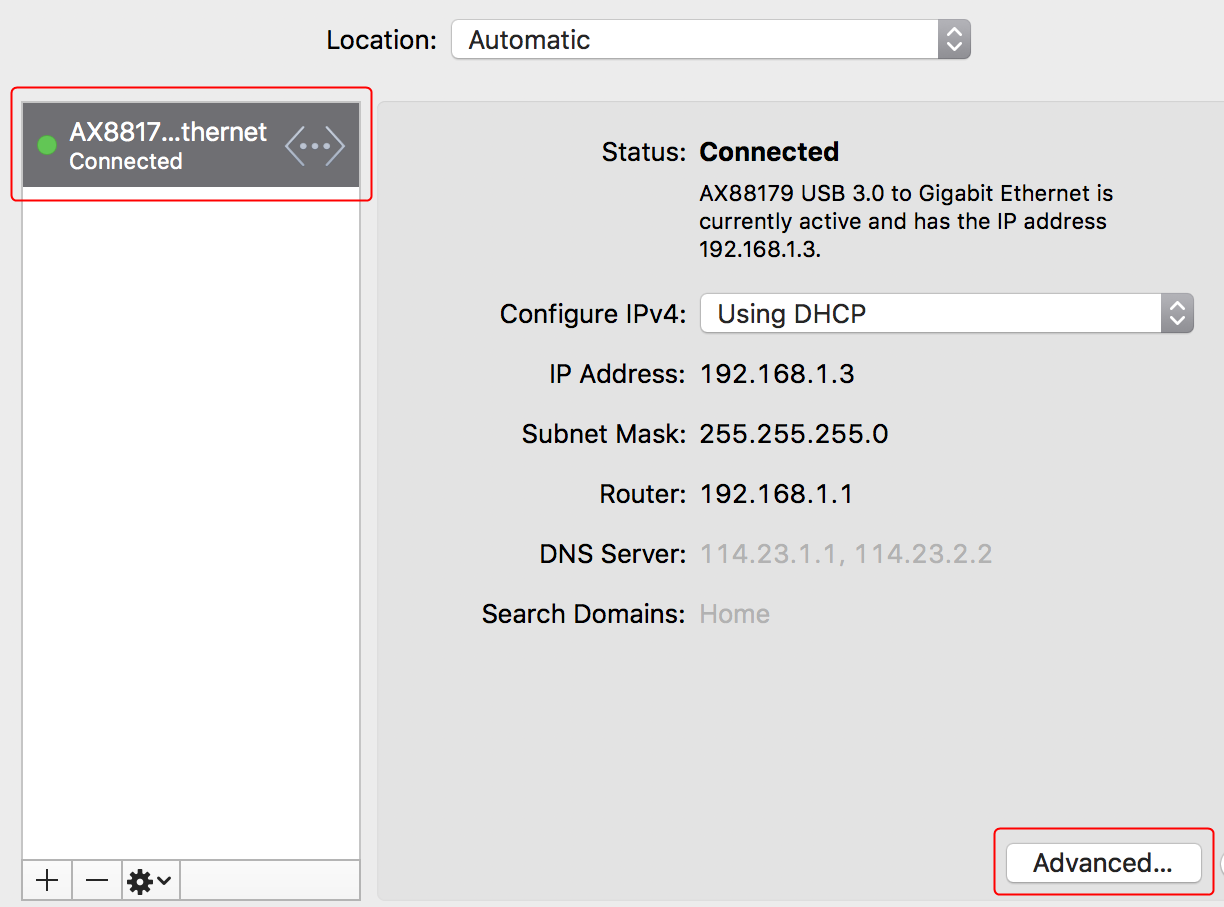
4. Select the Hardware tab and check the Speed field:
-
If the speed is lower than 1000baseT, see if it can be manually adjusted.
-
If 1000baseT is not listed as an option, the device does not support gigabit connection.

Check Your Cable Compatibility
The Ethernet cable you use can affect your speed. Using the wrong cable type may cap your connection below your plan’s capacity.
Quick Tips:
Cat 5 → supports up to 100 Mbps
Cat 5e → recommended for 250 Mbps and higher
Cat 6 → best for Gigabit (1 Gbps) and faster plans
Check Your Modem’s Capability
Your modem also needs to support Gigabit WAN (Wide Area Network) speeds. If the WAN port only supports 100 Mbps, your connection will be limited regardless of your plan or device capability.
To check:
- Visit the manufacturer’s website and look up your modem’s specifications, or
- Review the modem label or manual to find the WAN port speed (look for “1 Gbps” or “1000 Mbps”).
If your modem isn’t gigabit-capable, you may need to upgrade it to fully experience your plan’s maximum speed.
B. Wi-Fi (Wireless) Connection
Note: Wi-Fi speeds depend on your device’s wireless capability and the Wi-Fi standard your modem supports (e.g., Wi-Fi 4, 5, or 6).
Check the Attainable Speed of the Connected Device
Windows (Laptop/PC):
- Press Windows Key + R, type ncpa.cpl, and press Enter.
- Right-click Wi-Fi/Wireless Network Connection → select Status.

The Speed shown is your link speed (maximum connection rate between your device and modem).
Alternative path:
Go to Settings > Network and Sharing Center > Change adapter options, left-click the Wi-Fi adapter to view the link speed.
Mac OS:
Hold the Option key on the keyboard and click the Wi-Fi icon on the top menu bar.
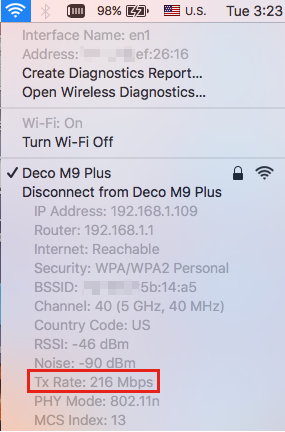
Look for Tx Rate — this indicates the Wi-Fi link speed.
Android:
Go to Settings > Wi-Fi, then tap the network you’re currently connected to.
The link speed or connection speed will be displayed.

Note:
Wi-Fi speeds are generally lower than wired speeds due to signal interference, distance, and network congestion.
For the most accurate speed test, use a wired (LAN) connection when possible.
Still Experiencing Slow Speeds?
If all your equipment supports gigabit speeds but you’re still experiencing slow performance, try using a different Ethernet port or cable and restarting your modem and computer.
If the issue continues, please contact us for further assistance.



